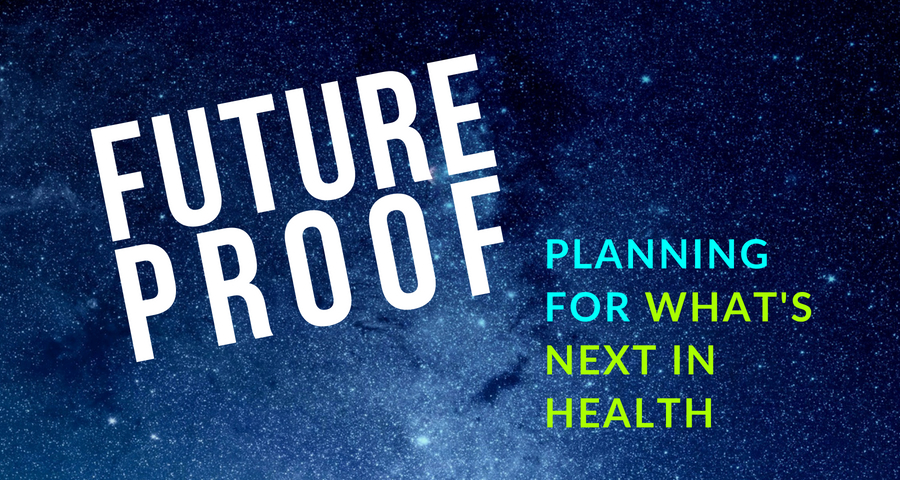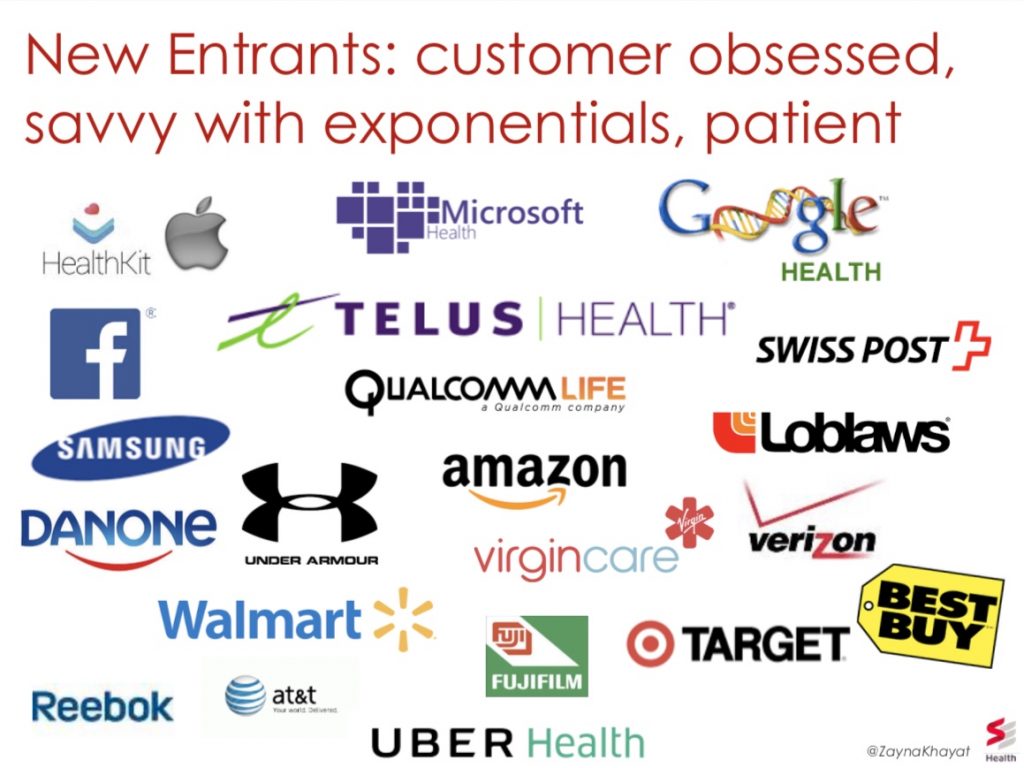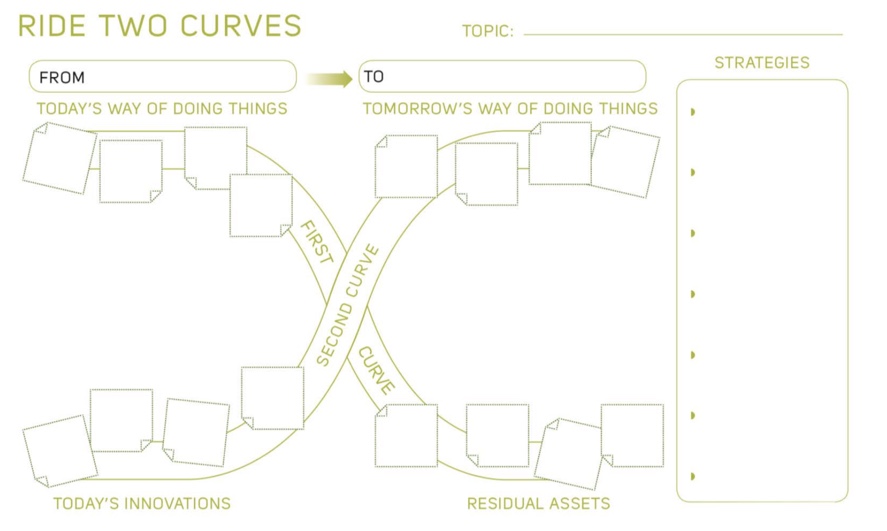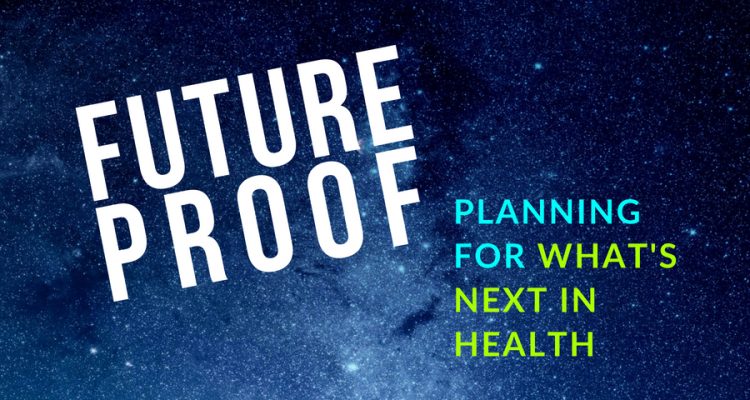At our latest gathering of the Safety Net Innovation Network, we set our sights on the future of health.

Over the course of two days, we forecasted what our jobs will look like in the year 2040 and how we’ll adapt to groundbreaking transformations. We discussed how technologies like artificial intelligence, robotics, virtual and augmented reality, blockchain, and machine learning are already impacting health care. We saw examples of health care being delivered by robots and holograms. And in hands-on workshops we learned strategies to plan for shifts in health care delivery and ways to lead our organizations through change.
Sharing our health care headlines from the future! What will care look like in 2040? #SNINsights pic.twitter.com/LLiAR1zamf
— CCI (@CCIVoice) November 14, 2018
Let’s make a “dating app” so patients can search, connect and build intentional relationships with their providers? #SNINsights pic.twitter.com/LHik1esdhp
— Diana Nguyen (@dianan_nguyen) November 14, 2018
Here are our staff’s top #SNINsights:
1. We need creative minds to build innovative organizations.
It’s amazing how your own mind can trap you to think, believe, and do things that may not be in your best interest or the best interest of others. Thinking about today, tomorrow, or the distant future requires intention. It requires creativity. And it requires practice.
A child’s mind is often characterized by words like free, creative, curious, and flexible, while an adult’s mind is characterized by words like rigid, stuck, closed, and inflexible. But this doesn’t necessarily need to be true. Practice can change that. Christi Zuber of Aspen Labs taught us that just as with physical exercise, it takes intention and action to develop and nurture a creative mind.
Download Christi’s presentation on cognitive bias and creativity.
2. Technology will free up health care to focus on what we do best — compassionate care.
So often we think of efficiency or productivity in terms of economic units or capital. How many dollars have we saved? Minutes reduced? Our keynote speaker Zayna Khayat, futurist at SE Health, talked about technology’s future impact in a very human-centered way: Instead of freeing up dollars or minutes, she talked of health tech in terms of “freeing up compassion.” Envision a future where providers and health care workers have the space to can do what they presumably got into this field for — connecting with and caring for other people. The most compelling emerging health technologies will be designed with this frame at the center.
Download Zayna’s keynote presentation on the future of health.
#SNINsights @ZaynaKhayat speaks about analog, physical solutions being limited to linear scaling. Technology allows us to scale exponentially at minimal cost once scaled, and leaves labor to what labor does best: compassion! pic.twitter.com/2J3sh3WKih
— Jenny Wright (@Jennyinifer) November 14, 2018
3. You don’t have to be a visionary to come up with mind-blowing ideas.
Zayna taught us that a teeny tiny percentage of great change comes from idea generation and iteration. The vast, vast majority of work should be put into its implementation — making it actually work and truly stick. We can all play a role in this process!
The “innovation lightbulb” is problematic because 99.9 percent of your energy actually needs to be channeled into planning, execution, and sustaining changes.
Download Zayna’s workshop slides on exponential innovation.
4. Create a niche.
Zayna also showed us how a number of countries are experimenting with focused “niche communities,” living environments that support the needs of specific populations, such as people suffering from dementia or who have been unhoused. DeHogeweyk, a village for dementia-suffering seniors in the Netherlands, has now expanded to California, Denmark, and Australia. Seattle is reducing chronic stress, social isolation, and sedentary lifestyles among Chinese immigrants through its International District Healthy Community focused on the Chinatown-International District. New York City has successfully implemented a neighborhood-based system of education and social services for the children of low-income families in Harlem, and Austin has built a 51-acre development that provides affordable, permanent housing and a supportive community for the chronically homeless.
5. Keep an eye on VR, AI, and voice technology.
Tech giants are all competing in virtual reality, artificial intelligence, and voice technology. (Note: They aren’t paying much attention to blockchain.) If Silicon Valley is racing to perfect these new technologies, it’s a good bet the future of health will be incorporating them as well.
But we don’t need to wait 10 or 20 years. VR, AI, and voice technology are already here — we just need to start using it. And we should continue to keep an open mind on how these innovations may continue to evolve. (For instance, we’re unfortunately still stuck on the word “telehealth,” when we really mean the more expansive field of “virtual care.”)
#sninsights from @ZaynaKhayat: most of what we imagine the future to be like is already here— it’s just not everywhere.
— Laura Blumenthal (@LBwuzHere) November 14, 2018
6. Rethink providers.
The demand for health care far exceeds our supply and this will not change. That’s one reason why there are so many new entrants — Facebook, Amazon, Target, and more! — in the health space. They’re customer obsessed, and they’re experimenting with digital ways of providing care that is effective and at scale.

And this goes beyond corporate America. Right now, postal workers are delivering medications and checking in on seniors in France, redefining who can provide health care.
The possibilities are endless. Our innovation safari to Uber Health really got us thinking about the potential for integrating the ride experience (and maybe the driver experience) into the care delivery experience. Maybe self-management coaching for the patient could begin as soon as they get in the car, and follow-up actions after visit could begin in the car on the way home? Maybe transitioning a patient to a virtual relationship (lower cost for patient and many providers) could be triggered by the use of the riding application? Maybe health care services could also be provided to riders as part of Uber’s support for its driving team?
7. Teach the fundamentals, then change the culture.
One of our innovation safaris took us to Zoo Labs, which teaches business to artists, empowers them as entrepreneurs and directs resources towards their ventures. Just as health care is moving from a focus on institutions to individuals, Zoo Labs recognizes this same shift within the music industry. We loved how Ayliffe Brown, the director of programs, described their theory of change: Zoo Labs is a testing ground for a hypothesis, and Zoo Lab’s hypothesis is that if you teach business to creatives, they can change the culture of the music economy.
More from @thezoolabs #SNINsights fun in the live room! pic.twitter.com/zbP26S2DS7
— Kirsten Meisinger (@kkmeisinger) November 15, 2018
8. Virtual reality is changing the patient experience.
On another innovation safari, we were introduced to Deva, a virtual platform for individuals with dementia. By playing Deva, patients (along with their caregivers) can practice everyday activities like gardening, go to a museum, or fix a quick meal in the kitchen. The patient’s family and friends can even help populate the virtual world with pictures, videos, and other reminders of the things that matter to them. Dementia often leaves a person with less of a sense of self and a lower sense of mastery in the world. Deva gives patients the opportunity to have both of these things again and provides loved ones a chance to connect in a positive way and see their loved ones thrive in new ways.
Similarly, another safari group heard from the Institute for the Future’s VR expert. Barry Pousman, the director of content marketing and digital strategy, told us that the “core of VR is experience and presence” and how VR, or “immersive storytelling,” can help foster empathy that can help (1) drive action, (2) promote behavior change, and (3) uncover unconscious bias. For instance, a women’s prison in Massachusetts is using VR to help inmates eligible for release “step into their urgent futures” and start to imagine and prepare for life reintegrated into society.
The VR experience #SNINsights pic.twitter.com/ts26Nya1ga
— Jed Heibel (@Jed95177658) November 15, 2018
9. Co-designing is essential.
We cannot lose sight of the needs of those we serve — especially as exponential shifts in technology create new possibilities for how care is delivered. In our safari trip to Mozzeria, an entirely deaf and hard of hearing-run restaurant in San Francisco, we were reminded that we must always work with underserved communities in designing their experiences in the clinic. Mozzeria staff shared the incredible frustration and trauma that deaf folks can experience when engaging with an unqualified ASL interpreter at the clinic, and even with the increasing prevalence of video interpreters, technological difficulties can impact deaf patients’ understanding of what is being conveyed to them. Patient-centered care and constant iteration on technology solutions within the clinic is a must.
#SNINsights wow! Amazing business model, heart + great food. pic.twitter.com/qtN3BECd5a
— Irma Murauskas (@IrmaMurauskas) November 15, 2018
Similarly, on our safari expedition to the Exploratorium, we witnessed how the museum does an amazing job of incorporating end-user feedback in their work to ensure they are creating an engaging experience for attendees. The museum starts every new initiative with surveying and talking to those they are targeting for a specific exhibit. Staff also start prototyping early and have a protected space where they allow controlled groups to test and engage with very early rough prototypes to ensure the intentions of the exhibit are clear and the exhibits have high usability. Once they refine their prototypes, and put the exhibit out into the live museum, they check in on use and engagement every six months. If they recognize it isn’t working, they have to feel comfortable “letting it go,” and just learn from it. There was a lot for health care to learn about engaging end users throughout the process of trying new solutions.
Where all the magic at the Exploratorium is created – the exhibit development shop! #SNINsights pic.twitter.com/P1bZw3pLdN
— Jane Chung (@janejchung) November 15, 2018
10. Implement a two-curve framework.

Katherine Haynes of Institute for the Future demonstrated for us the “second curve” business model. The idea is that you must ride the first curve — your organization’s older, traditional business — to the second curve. The second curve is the future, containing all the new technologies, consumers, and markets that organizations must embrace to survive. The key is following the signals to know when to jump from the first to the second.
Download Katherine’s presentation on moving from insight to action.
Brainstorming how to “ride two curves” — moving from today’s way of doing things to tomorrow’s way of doing things #sninsights pic.twitter.com/3ZKdOvkx6O
— CCI (@CCIVoice) November 15, 2018
Find this useful or interesting? We’re constantly sharing stuff like this. Sign up to receive our newsletter to stay in the loop.


